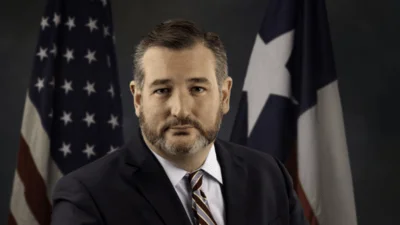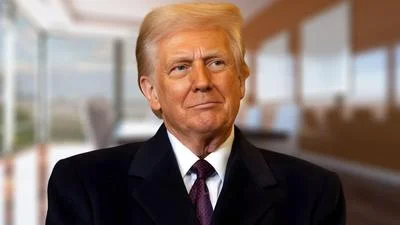The Congressional Record is a unique source of public documentation. It started in 1873, documenting nearly all the major and minor policies being discussed and debated.
“DEPARTMENT OF TRANSPORTATION AND RELATED AGENCIES APPROPRIATIONS ACT, 1998” mentioning the U.S. Dept. of Transportation was published in the Senate section on pages S8311-S8312 on July 30, 1997.
The publication is reproduced in full below:
DEPARTMENT OF TRANSPORTATION AND RELATED AGENCIES APPROPRIATIONS ACT,
1998
The PRESIDING OFFICER. Under the previous order, the clerk will report H.R. 2169.
The assistant legislative clerk read as follows:
A bill (H.R. 2169) making appropriations for the Department of Transportation and related agencies for the fiscal year ending September 30, 1998, and for other purposes.
The Senate resumed consideration of the bill.
Mr. HOLLINGS. Mr. President, included in the fiscal year 1998 Transportation appropriations bill is an amendment that directs the Federal Aviation Administration [FAA] to work with one segment of the aviation industry to develop an expeditious way to comply with the pilot record sharing legislation, enacted last year.
When we passed the pilot record sharing legislation as part of the FAA Reauthorization Act, ``air carriers'' were required to obtain certain records, including FAA records, on pilots. The term air carrier includes more than just airlines. It also includes, for example, on-
demand non-scheduled carriers. These carriers tend to hire pilots on an as-needed basis, and need the information from the FAA in a more timely manner than airlines.
The FAA is aware that these carriers need to be able to respond quickly to information requests from the on-demand segment of the industry, and are striving to get the required information to them within 15 days. Ultimately, the information should be available on a real time basis through desk top computers. The amendment recognizes that the FAA must work with industry to figure out a means to comply with the law, and then implement those changes.
There are many ways for the FAA to facilitate the passing of the information, and discussions should commence with the industry. Compliance is critical, but we cannot ask the impossible of the industry or the FAA. I also want to note that the directive in the Appropriations bill does not authorize any new program, but merely directs the FAA to work with the industry to implement last year's legislation. As a result, I do not believe that we are legislating on an Appropriations bill.
I want to thank the chairman, Senator Shelby, and the ranking member, Senator Lautenberg, for their acceptance of the amendment.
Mr. D'AMATO. Mr. President, the Senate has accepted an amendment that Senator Moynihan and I offered to the fiscal year 1998 Transportation appropriations bill that I believe will help provide a measure of financial relief to the working men and women of Nassau, Suffolk, Westchester, Putnam and Dutchess counties. Residents of these counties pay a premium price to commute each day into New York City by commuter railroad. Roughly half of these commuters then have to pay another fare to get to their final destination by bus or subway. Our amendment will require the New York Metropolitan Transportation Authority [MTA] to conduct a study to determine the feasibility of providing a free subway or bus transfer to those persons who use the Long Island Rail Road
[LIRR] or Metro North commuter railroad so that these daily riders may decrease their commuting costs.
Recently, the New York Metropolitan Transportation Authority [MTA] announced its MetroCard Gold program. This program for the first time provides free transfers for those who transfer between New York City buses and subways. In essence, the commuter who until now commuted from a two-fare zone now pays only one fare. This program will greatly benefit city commuters, saving them approximately $750 per year. It will also have a positive impact on the local economy and the environment.
In addition, at my urging, the MTA will extend this single fare policy for similar bus-to-bus and bus-to-subway transfers for the MTA's 40,000 Long Island Bus commuters traveling between Long Island and New York City. It is estimated that these commuters will realize an average yearly savings of approximately $900 based on current fare structures.
The intended goal of this policy is to create a seamless, integrated transportation system that will benefit commuters in the most transit-
dependent region of our country and, indeed, the world. I commend Governor George Pataki and MTA Chairman Virgil Conway for this forward thinking initiative. What now needs to be determined is if this policy can be expanded. My amendment will require the Metropolitan Transportation Authority [MTA] to conduct a feasibility study, from funds made available to the MTA from the Federal Transit Administration, on extending this policy to New York's two commuter railroads.
New York is home to the two largest commuter railroads in the Nation--the Long Island Rail Road [LIRR] and the Metro North railroad. Each day, approximately 235,000 commuters depend on these two railroads to get to work and back home again. Almost half of these commuters--
108,000 or 46 percent--transfer to subways and buses once they arrive in New York City. They also repeat the trip in the evening as they head back to the train station. These are commuters who may pay $125, $175,
$225 or more per month to take these two commuter railroads. On top of that, they can pay an additional $750 over the course of a year for that portion of their commute that occurs on the city's subways and buses.
If we really want to create a seamless transit system, one that encourages more people to take the train and leave their cars at home, then Metro North and Long Island Rail Road commuters should be offered a free transfer to the City's subways and buses. In addition to the financial savings for commuters, the benefits to public health, the environment and the preservation of natural resources as well as the enhancements to the quality of life for these commuters should be powerful incentives to extend this single-fare policy.
More than 100,000 Long Island Rail Road and Metro North rail commuters use New York's subway and bus systems daily. If it is feasible--and taking into consideration all factors--then the commuters who use Long Island Rail Road [LIRR] or Metro North and the New York City subway or bus systems should receive similar benefits as are available under the MTA's single-fare policy. This amendment will move us one step closer to that goal.
Mrs. BOXER. Mr. President, I would like to ask the distinguished chairman of the Subcommittee on Transportation appropriations if he would respond to questions that I have regarding the bill.
Mr. SHELBY. I would be happy to respond to the questions from the Senator from California.
Mrs. BOXER. I first want to thank the chairman for his work in developing this major appropriations bill that is so vital to our Nation's economic productivity and quality of life. This was an important undertaking that presented many difficult issues. I applaud him for his patience and his willingness to meet with me and my constituents in California on one of those issues involving a fixed-
guideway transit project.
As the chairman knows, my State has many requests for transportation investments, particularly in the area of bus and bus facilities. I would like to bring to the chairman's attention two projects in particular which were not funded in either the Senate or the House bills. The first was a request from the Los Angeles Metropolitan Transit Operators Coalition, which represents 8 municipal transit operators serving more than 63 million passengers annually in 36 cities of Los Angeles County. The coalition was formed to obtain economies of scale in procuring replacement and expansion buses and to provide critical alternative fuel facilities. These clean-fuel buses are vital for the Los Angeles area which has the most severe air pollution in the country. The second project involves replacement and expansion buses for the growing city of Santa Clarita.
I ask the chairman if he would support some funding for these two projects when he meets in conference with the House on the Transportation appropriations bill?
Mr. SHELBY. I understand the Senator's concerns about funding for bus and bus facilities in California and the subcommittee did face very difficult choices for funding. I will be happy to work with the Senator on these issues in the conference committee.
Mrs. BOXER. I thank the Senator and ask if he would respond to an additional question.
Mr. SHELBY. I would be happy to.
Mrs. BOXER. As the Senator knows, the advanced technology transit bus
[ATTB] under development in California has the potential to be the next-generation urban transit bus. It has already demonstrated its ability to provide maintenance savings, accommodation for the disabled, and to be a platform for a variety of clean-fuel technologies. The committee agreed at my request to provide some funding for the project under the bus program. I now understand that the chairman did meet the President's request for full funding of the project at $10 million under the Transit Planning and Research Program and ask that he support transferring the $2 million earmarked elsewhere for the ATTB in the bus program funding to Foothill Transit.
Mr. SHELBY. Yes, the committee fully funded the President's request under the Transit Planning and Research Program. I will be happy to work with the distinguished Senator from California during conference committee consideration of this issue.
Mrs. BOXER. I thank the Senator for his continued cooperation and leadership on the Transportation appropriations bill.
Mr. GRAMM. Mr. President, I ask for the yeas and nays.
The PRESIDING OFFICER. Is there a sufficient second?
There is a sufficient second.
The yeas and nays were ordered.
The PRESIDING OFFICER. The question occurs on passage of the bill, as amended.
The yeas and nays have been ordered. The clerk will call the roll.
The assistant legislative clerk called the roll.
Mr. NICKLES. I announce that the Senator from North Carolina [Mr. Faircloth] is necessarily absent.
The result was announced--yeas 98, nays 1, as follows:
YEAS--98
AbrahamAkakaAllardAshcroftBaucusBennettBidenBingamanBondBoxerBreauxBrownbackBryanBumpersBurnsByrdCampbellChafeeClelandCoatsCochranCollinsConradCoverdellCraigD'AmatoDaschleDeWineDoddDomeniciDorganDurbinEnziFeingoldFeinsteinFordFristGlennGortonGrahamGrammGramsGrassleyGreggHagelHarkinHatchHelmsHollingsHutchinsonHutchisonInhofeInouyeJeffordsJohnsonKempthorneKennedyKerreyKerryKohlKylLandrieuLautenbergLeahyLevinLiebermanLottLugarMackMcCainMcConnellMikulskiMoseley-BraunMoynihanMurkowskiMurrayNicklesReedReidRobbRobertsRockefellerSantorumSarbanesSessionsShelbySmith (NH)Smith (OR)SnoweSpecterStevensThomasThompsonThurmondTorricelliWarnerWellstoneWyden
NAYS--1
Roth
NOT VOTING--1
Faircloth
The bill (H.R. 2169), as amended, was passed.
The PRESIDING OFFICER. Under a previous order, the Senate insists on its amendment, requests a conference with the House, and the Chair is authorized to appoint conferees.
The PRESIDING OFFICER (Mr. Hutchinson) appointed Mr. Shelby, Mr. Domenici, Mr. Specter, Mr. Bond, Mr. Gorton, Mr. Bennett, Mr. Faircloth, Mr. Stevens, Mr. Lautenberg, Mr. Byrd, Ms. Mikulski, Mr. Reid, Mr. Kohl, and Mrs. Murray conferees on the part of the Senate.
Mr. INHOFE addressed the Chair.
The PRESIDING OFFICER. The Senator from Oklahoma.
____________________








